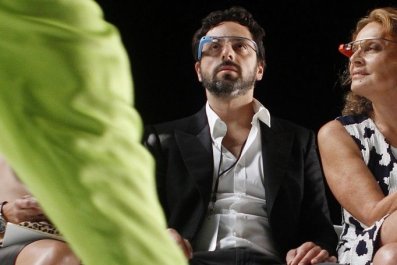Bacchus would be so disappointed. Italy, the world's No. 1 wine-producing nation - whose history is steeped in the growing, cultivating, selling, and consuming of wine - is drinking less of it these days.
Meanwhile, the rest of the world is drinking more Italian wine than ever. This year, Italy claimed a world record in wine production with 1.2 billion gallons, beating rival France's 1.16 billion gallons. Italy is also now the largest exporter of wine and the No. 1 exporter to the United States.
Italy's wine culture is being affected by a number of factors, from an economic recession and changing demographics to a flourishing craft beer culture and the country's changing drinking habits.
Last year, Italy exported 78 million gallons of wine to America. That's nearly a quarter of the total wine imported by the U.S., according to the Beverage Information Group. Italy also ranks second in the world (behind France) for personal wine consumption, with each Italian consuming 13.6 gallons a year. Compare that to America, which ranks 42nd in wine consumption, with the average American drinking 3.6 gallons a year.
And yet, wine consumption in Italy is dwindling.
Five years ago Italians drank 14.5 gallons a year - and significantly less than the 15.1 gallons they drank in 2006, according to the Beverage Information Group. It's a dramatic change from the 1970s, when Italians drank 29 gallons, according to Assoenologi, the main Italian oenologists' association.
"This is happening in all three of the world's major wine-producing countries: France, Italy, and Spain," said Jancis Robinson, wine critic of the Financial Times. "Wine - so much part of tradition and the past in these countries - is seen as an old person's or peasant's drink, whereas heavily advertised beers, spirits, and sodas are seen as more youthful and modern."
Meanwhile, Americans are drinking more wine each year. Last year, Americans drank more wine than any other nationality. Table wine consumption grew for the 19th straight year, with around 295 million cases of table wine - that is, dozens of bottles - drunk by Americans, up nearly 3 percent from the previous year and up 34 percent from 2002, according to the Wine Market Council's 2012 U.S. Wine Consumer Trends & Analysis. While wine consumption in America has grown steadily, in Italy it decreased by 4.5 percent between 2007 and 2012, according to the Beverage Information Group.
"America is catching up and Italy is becoming more modern and moderate in its consumption," said Joe Bastianich, co-partner of Eataly New York. "In a more agricultural rural, country, people drank wine because it was an agricultural product, no different from corn and tomatoes. Now you have the artisanal cocktail trend in Italy and artisanal brewed beers.... America, on the other hand, is drinking less crap and more wine because we're trying to live a better lifestyle and [are] becoming more educated."

Italy was producing wine centuries before the rise of the Roman Empire. Even children drink wine. Not long ago, wine was safer to drink than water. Until recently, Italy was a place that enjoyed "the long lunch break, the late dinner, where you could drink a bottle or whatever with lunch, have your glass of wine in the morning on your way to work with your coffee," said Eric Asimov, wine critic of The New York Times.
But the concept of the Italian family gathering around the dinner table, drinking wine from its own backyard vineyards, is fading fast. And the homegrown, provincial nature of Italian wine has been diluted, too. Add to that a deep, prolonged economic recession and the rising number of people without work (in September, Italian unemployment hit 12.5 percent, while the number of young people under the age of 25 without jobs hit a historic high of 40.4 percent) and Italians have far less money to spend on luxury goods, including fine wine and eating out.
When families are pressed for cash, wine often falls off the shopping list. "You're not going to die if you don't drink wine," said Sergio Esposito, CEO and founder of Italian Wine Merchants in New York City.
There has also been a crackdown on drunk driving in Italy in recent years. Stringent new laws backed by stiff fines have led to a decline in wine drinking at restaurants.
Demographics may also play a role. Italy is an increasingly "old" nation. Along with Germany, it has the highest proportion (20.6 percent) of people age 65 years or older in the European Union, according to the European Commission. Italy also ranks near the bottom - 203 out of 224 countries in the world - for birth rate, at 1.41 children per mother.
With age often comes illness, and with illness comes a doctor's advice to drink less alcohol. "Not too long ago, Italians believed that 'a glass of wine a day would keep the doctor away.' This is outdated thinking," said Monica Larner, Italian correspondent for The Wine Advocate. "There is a medical disconnect between wine and general alcohol, and both are seen as unhealthy."
Meanwhile, the same young people who are struggling to get jobs are growing less interested in their own heritage. "It might seem preposterous, but I think Italy's young people see wine as their parents' and grandparents' drink of choice. They're looking for something more exciting, perhaps, like the amazing craft brews being made all over Italy now, or bigger bang for the buck by way of cocktails," said the wine writer Anthony Giglio.
Paul Lang, a sommelier and chef who founded A Casa, a wine events company, has a Sicilian friend who chose to make wine in his parents' garage rather than go to the mainland and work for someone else. This career choice, however, is becoming the exception. "People want things easier and quicker," said Lang, who has lived in Italy on and off for 20 years. "Making wine is complicated and takes a long time. And just look at how physically and mentally hard the work is. It's not something the younger generation who have been influenced by the U.S. is embracing."
Indeed, when it comes to drinking, Italians have never had more choice. The rise of Italy's craft beer and cocktail culture has changed the country's beverage landscape, especially for a generation looking for something different from their grandparents' favorite tipple.
Microbreweries emerged in Italy in 1996, when Teo Musso started Baladin beers in Piozzo, outside of Torino. Over the past four years, craft beer has surged in Italy, explained Katie Parla, a Rome-based food and beverage writer. "There must be 500 to 600 craft breweries in a wide range of quality, from undrinkable to world class," she said.
"As a resident in the center of Rome, I have seen more Irish Pubs open for business over the years than wine bars," Larner said. "Many times I see a neighborhood wine bar close, only to see its license renewed as a popular Irish-themed pub."
In Italy's major cities, cocktail drinking is on the rise, but that does not necessarily mean hard liquor is eating into sales of wine. "The nightlife I'm seeing for young people, let's say under 30, is all about cocktails and mixology," Giglio said. "For young people out to maximize [the effect of] their limited buying power, cocktails make more sense than wine."
Parla agrees. "It's a cocktail at a bar, but multiple cocktails? It's not done," she said. "There is a microscopic cocktail culture focused around the center of Rome: three places with really nice cocktails, plus hotels, where cocktails are not for Romans but for tourists."
A struggling economy, high unemployment, demographic shifts, changing tastes, and beverage trends - that's one stiff cocktail. How will Italy navigate its future? The democratization and globalization of wine is good news for a country where wine consumption is on the decline.
In the United States alone, there were 100 million adult wine drinkers in 2012, according to the Wine Market Council. That's more wine-drinking Americans than the population of Germany (82 million) or Italy (61 million), and roughly twice as many as South Africa (52 million).
Ten years ago, Fabio de Ambrogi left a career in the fashion industry to work at his family's vineyard, Fattoria di Gratena, in Arezzo, Italy, one of the first certified organic vineyards in the country. "Today, when more and more people have problems, wine is a way to enjoy life," he said. "It helps you to meet people, do business and make new friends. But wine now is not for everybody; good wine is expensive."
Seventy percent of his wine goes to Sweden, though he also exports to Germany, Belgium, Japan, and Holland. Italy makes up around 5 percent of his sales. Most of his European customers are restaurateurs. "This business is for people who have a passion for wine and who don't work just for money," Ambrogi added. "We need time [to produce great wine] and very often it's too long."
"Domestic wine sales have long since reached saturation," Larner explained. Italian producers take a risk if they try to depend on domestic sales alone. "Now with the economic crisis in full force in the Eurozone, a reliance on the Italian wine market is tantamount to suicide."
Indeed, the future of wine in Italy may be just as much about reinventing its past to ensure its future as it is about looking overseas for business. As Larner put it, "Italy must export to survive."
























